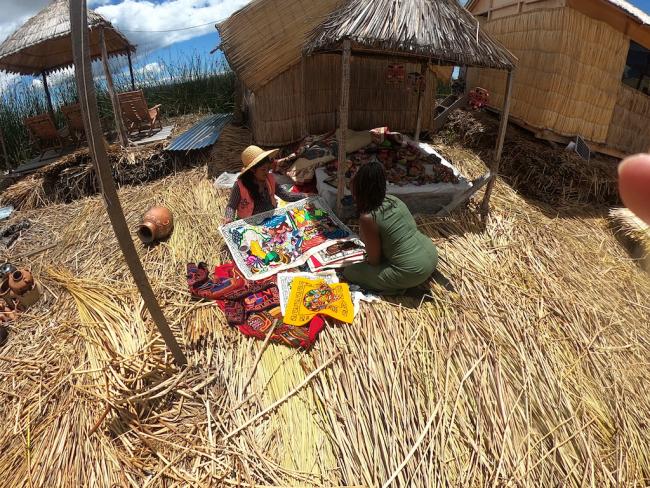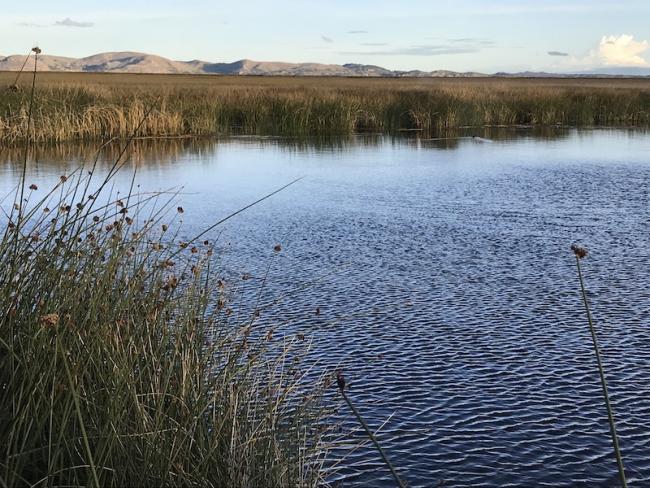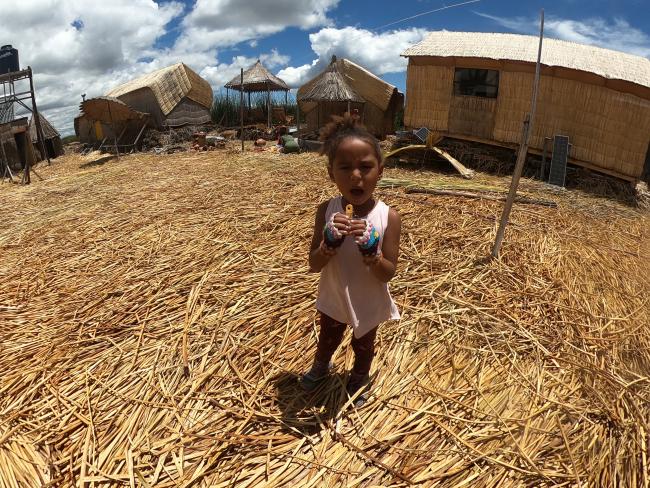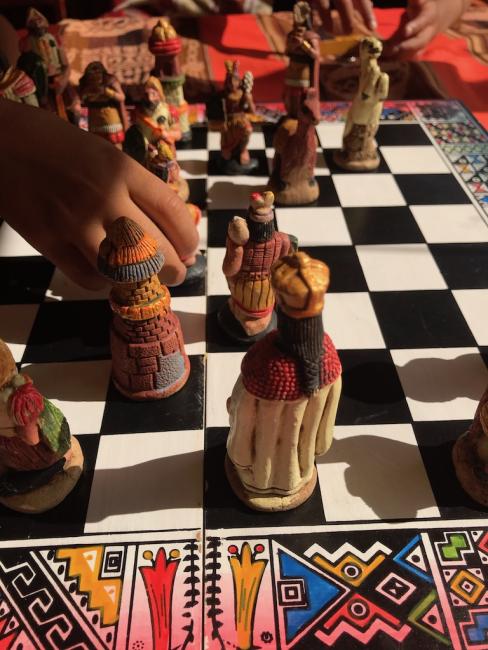What Had Happened Was…
We arrived at the northern mouth of the lake, to surprisingly little fanfare. No shop selling souvenirs, or colourful sign to congregate around for photos. There was one traditionally dressed woman selling snacks, and our host, Eddie, with his speedboat ready to take us to the Uros Floating Islands. There is a small fee for foreigners entering the lake, collected by a young man in a small manmade hut. As Uros is an autonomous region, all of the money collected goes straight to the community.
We’d spend the next 24 hours on a small island, home to just one family.
The Uros live primarily on manmade islands. Eddie and his father built the island with their own hands, a process that takes about 6 months, using Totora reeds, which are like hollow, flexible bamboo reeds.
Peru Hop offers tours at every stop, including Puno and Lake Titicaca. They sell very cheap homestays on the Uros Floating Islands. I’ve heard mixed reviews about them, so we booked our lodge through booking.com. It’s owned by a family of four, and has stellar reviews. Everyone remarked on how at home they felt, and there was hot water. It was the perfect choice in the end.
The island we stayed on has about 3 sets of living quarters for the family, a kitchen, a dining room, a little shop where the mother and sister craft souvenirs, and the lodge, which consists of 2 houses.
The rooms have two full size beds, and are warm, spacious, and colorful. We loved them immediately. Our space had hot water for showers, and a toilet that didn’t flush, but required you to cover your solid waste in a sort of sand wood chip mix. To be honest, it’s more effective at masking unpleasant smells than any spray you can buy.



